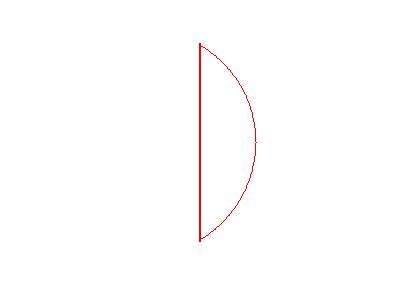two circles of same dimensions pass through center of each other. what will be the area which is common to both circles in terms of area of any of the circles?if the radius of circles is 'r'.
We want the football-shaped area in red below:
 Draw a line segment connecting their centers,
and line segments from the centers to their upper
point of intersection:
Draw a line segment connecting their centers,
and line segments from the centers to their upper
point of intersection:
 That green triangle is an equilateral triangle because all its
sides are radii of one circle or the other.
Therefore the angle marked is 60°, and all the green sides of
the equilateral triangle are "r" in length.
Now let's draw another equilateral triangle underneath it:
That green triangle is an equilateral triangle because all its
sides are radii of one circle or the other.
Therefore the angle marked is 60°, and all the green sides of
the equilateral triangle are "r" in length.
Now let's draw another equilateral triangle underneath it:
 Those two 60° angles make a big 120° angle, so let's erase
three of those green lines and mark that big angle 120°.
Those two 60° angles make a big 120° angle, so let's erase
three of those green lines and mark that big angle 120°.
 Now we'll lake away everything but the (D-shaped)
segment outlined in red, and leave the two green radii
which make up the central angle of 120° which subtends
the (D-shaped) segment outlined in red.
Now we'll lake away everything but the (D-shaped)
segment outlined in red, and leave the two green radii
which make up the central angle of 120° which subtends
the (D-shaped) segment outlined in red.
 The formula for the area of a (D-shaped) sector of a circle is
The formula for the area of a (D-shaped) sector of a circle is
 where the subtending central angle is measured in radians.
We convert 120° to radians:
where the subtending central angle is measured in radians.
We convert 120° to radians:  and substitute in the formula:
and substitute in the formula:

 That's the area of this (D-shaped) segment, which is half of the
desired area:
That's the area of this (D-shaped) segment, which is half of the
desired area:
 So the desired area of the entire overlapping part
So the desired area of the entire overlapping part

 is twice the area of the (D-shaped) sector or
is twice the area of the (D-shaped) sector or
 or
or
 Edwin
Edwin